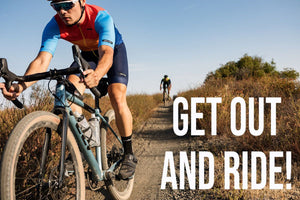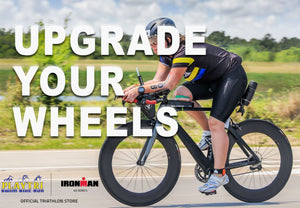
THE SHORT COURSE ~ RUN FOCUS

When I recall last year's short course experiment (getting my butt kicked around) & experience (humbling yet absolutely invigorating)....I quickly realized short course triathletes are on a total different level when it comes to the run segment of the triathlon.
And, NO- I am not just stating a Captain Obvious Moment but rather they approach the entire race (including their warm ups) completely different than that of a long course athlete.
Here are just a few aspects that stood out to me. Plus skills and drills to implement in your workouts.
RUN
WARM UP
Have you ever been to an 140.6 or 70.3 distance event and watched the athletes warming up? Better yet, watch them about 2-3 days out from 'game day.' Its fascinating how "fast" these athletes are trucking through the streets... before the race even begins. Honestly, everyone knows they are not going to be running these paces (and we are talking just a few pick ups to stimulate the body).
Short course athletes on the other hand (much like professional runners) understand there is a difference between truly allowing the body to gently warm up on race day (including days leading into the race) compared to race pacing. I noticed little bravado and far more focus on individual needs in both race preparation and race mentality.
Workout Skill / Drill to Implement in Training:
LEARN what your body needs to properly warm up and put you into the mindset to have your best day. Although everyone is different, research has shown athletes need at least 8-12 minutes to warm up & to finish the warm up no earlier than ~5min before the gun goes off. PRACTICE your warm ups before each workout as you near race day. It sounds ridiculously easy, but you will teach your body and mind to 'turn on' automatically come race day, without the outside influences (AKA: testosterone or how many IM tattooed athletes you can get to look at you).
TRANSITION
Again, T2 is no different- these guys/gals are lightening FAST! Long course athletes tend to get trapped into a mindset that slower is better. I don't agree with that in long course on so many levels, but in short course if you take that route... good luck on catching them!
Workout Skill / Drill to Implement in Training:
1x/week at least, set up a mock T2. Lay out all your stuff, and do at least 10 run throughs. Work on the dismount, with or without shoes, your choice, BUT make sure you actually practice this otherwise come race day pressure and people around you, you could create an unsafe dismount line both for you and other athletes. Practice pushing the bike by the saddle, running to your 'rack', switching out bike gear for run gear, and hit the pavement with your race belt (penalty if your don't wrap one of these guys around your waist before you leave T2). Simply, practice.
CORNERING
Watching short course, you will see that these athletes do not slow down, look over their shoulder to check if anyone else is turning as they do, they for sure do not cut in wide and then be forced to swing out wide as they round a cone or barrier.... watch a race car driver, this is probably the easiest way to learn how we should be taking the corners :)
Workout Skill / Drill to Implement in Training:
EVERY run you go out for, you can practice this in training. Teach your body to pick up the pace (NOT slow down) through quicker, slightly smaller steps as you approach a corner or U-turn. Teach your body to 'attack' the round about by taking a wide angle and then cut sharply into the turn. When making your way out of the turn, keep the feet quick and under you as you gain stability and forward progression on the straight away.
Again, its about practicing this and doing it over and over- short, long, slow, tempo, hills... EVERY run, practice this approach
DRAFTING
YEP, you CAN draft on the run- even if it is only for mental focus and to help you stay on pace. Also consider that not every race is going to hand us calm winds and sunny skies. Short course athletes have no problem 'sitting on others heels'. They use others to block the elements, keep pace, get out of their own heads when they are hurting, takes the pressure off of them as they ascend and descend... in other words, they don't mind using one another. But this is something that you should work on... it does not come natural for athletes to stay patient and also calm as someone is breathing down their neck when they are already on the brink.
Workout Skill / Drill to Implement in Training:
Your next group run, you don't even need to tell anyone you are practicing this skill... let someone else, who is similar to your pace or just slightly faster, lead the way. Work on sitting on each side of their shoulder and right behind them. Notice the more you practice, the less ego will eat at you and you can actually teach your body to 'calm down' knowing you are not the one having to set the pace or block the elements.
The next level or step up would be sitting on another athletes heels and then picking up the pace or even working on short 1-2 minute surges, then backing off and returning to their heels. It takes getting used to mentally and physically- work on it to take your racing to the next level- yes, even you long course athletes!
TO KEEP IT STRAIGHTFORWARD:
Short course teaches us HOW TO RACE... even when the goal is long course.
Short course stimulates us mentally and physically in every aspect of race day.
And maybe what I love most about short course, that WE ALL can take away, short course athletes understand and live balanced... they work hard, train hard, race hard, and recover harder... all this and I will say it again like I did in the first article on this topic, "short course athletes show up, push really hard, and get to brunch by noon."
Worth it hands down!
TRAIN HAPPY AND IF YOU HAVEN'T IN AWHILE, CONSIDER HITTING UP OUR LOCAL SPRINT OR OLYMPIC.
If you have any questions, please email me at Amari@playtri.com
Author: Amari Holmes


